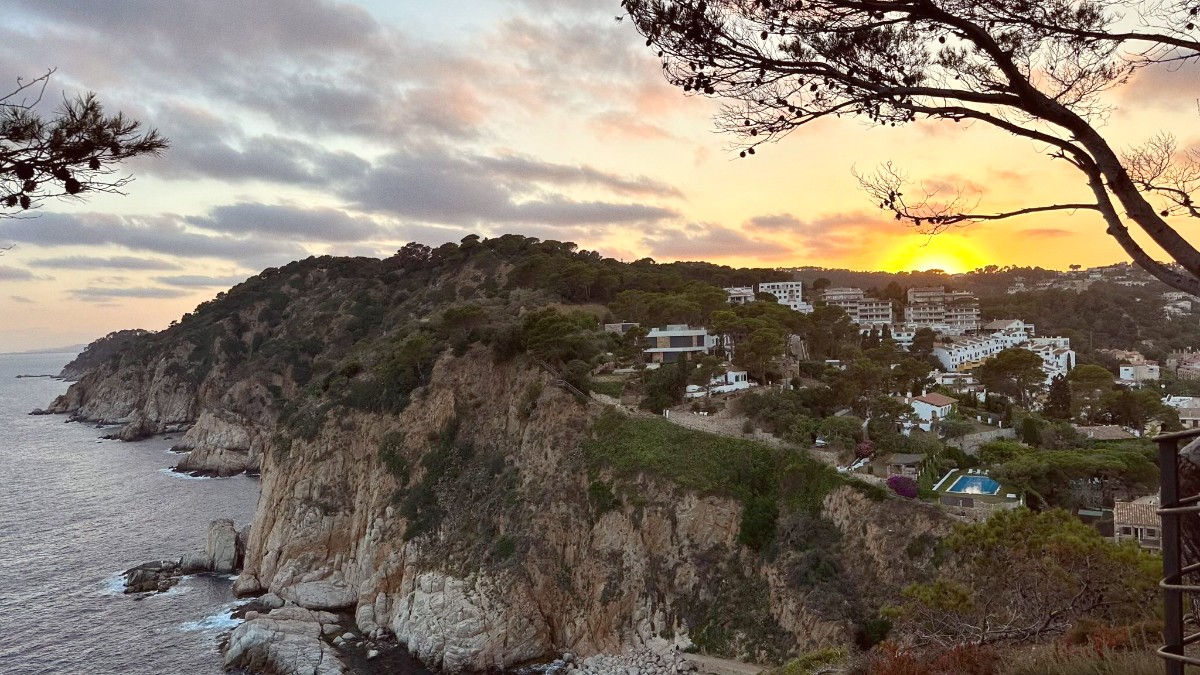
Spain
During spring, temperatures range from 15°C to 22°C (59°F to 72°F). Precipitation stays low, and humidity levels remain comfortable. This period is suitable for outdoor activities like hiking and sightseeing, as the weather is pleasant without being too hot.
Summer brings the warmest weather, with temperatures ranging from 25°C to 30°C (77°F to 86°F). July and August often see temperatures exceeding 30°C. Humidity stays low, and precipitation is minimal, making these months perfect for beach activities and water sports. Days are long, offering ample time for enjoyment.
In autumn, temperatures cool. Moderate precipitation can occur, but humidity stays comfortable. This period presents pleasant weather for exploration, with the added beauty of changing foliage inland. The sea remains warm enough for swimming through much of September.
Winter months bring cooler temperatures. While not ideal for beach holidays, this season presents opportunities for cultural exploration and enjoyment of the authentic local atmosphere without crowds.
July-August
Warmest weather, lively festivals.
Crowded beaches, higher prices.
April-June, Sept-Oct
Comfortable temperatures, fewer crowds, lower prices, warm water from late May, harvest season.
Some establishments may have limited hours, water can be chilly early in the season.
November-March
Fewest crowds, lowest accommodation prices, cultural exploration.
Many tourist businesses close, cooler temperatures, increased rain, cold sea for swimming.
The "Tramuntana" wind, a strong, cold, dry wind from the north, can affect the northern Costa Brava, especially around Cap de Creus. It occurs in any season, though less common in summer. This wind brings clear skies but can be quite strong. Occasional heavy rainfall can occur in autumn, leading to localized flooding in some areas.
Keep an eye on weather forecasts during these months. Heatwaves are common in July and August, leading to extremely high temperatures.
June to September has the best conditions.
April-May and September-October present comfortable temperatures and fewer people.
April-May and September-October are suitable, and low season works well for immersion.
Spring and Autumn present pleasant temperatures for cycling.
September-October aligns with the harvest season, offering insight into vineyards.
Spain is part of the Schengen Area, which shapes visa rules for many visitors.
Citizens from countries like the USA, Canada, Australia, the UK, New Zealand, and most South American countries can enter Spain for tourism or business. They can stay for up to 90 days within any 180-day period without a visa. This makes possible straightforward entry for most short-term visitors.
If your nationality calls for a visa for the Schengen Area, you must apply for a Schengen Visa (Type C). Apply at the Spanish embassy or consulate in your country of residence. From mid-2025, non-EU citizens who are currently visa-exempt will need an ETIAS travel authorization.
Spain has no general entry fees for tourism. Upon arrival, non-EU citizens go through standard immigration checks.
The Euro (€, EUR) is the currency used in Spain.
ATMs (cash machines) are widely available in towns and cities throughout the Costa Brava. They generally grant the best exchange rates. Banks and exchange offices also offer currency exchange, but their rates may be less favorable. Inform your bank of travel plans to avoid card blocking during international transactions. Credit cards (Visa, Mastercard) are accepted in most hotels, restaurants, and larger shops, but carrying some cash for smaller purchases or markets is always helpful.
Spain is a very safe country for tourists, but awareness of common precautions remains wise.
Ensure your routine vaccinations (MMR, DTP, Varicella, Polio) are current.
Recommended for some travelers; consult a healthcare professional for personalized advice.
No specific vaccinations are for entry to Spain for most travelers from Western countries.
Sunburn & Heatstroke:
The summer sun can be strong. Use broad-spectrum mineral sunscreen (SPF 30+), wear a wide-brimmed sun hat and sunglasses, and stay hydrated by drinking plenty of water. Seek shade during the hottest parts of the day.
Food & Waterborne Illnesses: The risk remains generally low. Tap water is safe to drink in most urban areas. Insect Bites: Mosquitoes can be present, especially near water in summer evenings. Jellyfish: Can appear in coastal waters, specifically in late summer.
Look for warning flags on beaches indicating water conditions and potential hazards.
Entitled to public healthcare with a valid European Health Insurance Card (EHIC).
Should have comprehensive travel insurance. Private clinics are available in most larger towns.
Identified by a green cross, widely available. Pharmacists offer advice for minor ailments.
The Costa Brava is generally safe for tourists. Pickpocketing and petty theft are the most common issues, especially in crowded tourist areas.
Highly recommended for all travelers. A policy should cover medical emergencies, repatriation, trip cancellation or interruption, lost luggage, and personal liability. Compare policies from reputable providers like World Nomads, SafetyWing, or Insubuy to find coverage that fits your needs.
Covers illness or injury during your trip, including doctor visits and hospital stays.
Covers trip cancellation, delays, or interruptions due to unforeseen circumstances.
Reimbursement for lost, stolen, or damaged luggage and personal items.